You burned through $5K on paid social, and all you got was a trickle of clicks and a mountain of regret.
Sound familiar? You’re not alone.
Many marketers are still throwing money at paid social hoping something sticks. But with rising ad costs, crowded platforms and constant algorithm shifts, success today requires a more innovative, more disciplined approach.
Choosing the right platforms, sharpening your creative, and using audience data more effectively can help you make paid social profitable. Here’s how.
1. Choose the right platform (stop spreading too thin)
Before you launch anything, look hard at where your audience spends time — and where they’re most ready to engage with your brand.
Here’s a quick breakdown of major paid social platforms:
- LinkedIn: Best for B2B, professional targeting, account-based marketing and reaching decision-makers.
- Instagram and TikTok: Strong for visual brands, lifestyle products and short-form video.
- Facebook: Solid for broad targeting, community engagement and retargeting.
- YouTube: Ideal for video-driven campaigns, demos and educational content.
How to align platform choice with goals
- Define your target (job title, demographics, interests, behaviors).
- Map those characteristics to where they spend time and where they’re likely to engage with your offer.
- Assess your budget realistically. Some platforms (like LinkedIn) cost more per click but can deliver higher-quality leads.
- Run small pilots across two or three platforms. Track early signals — engagement, click-through, cost per result — and shift spend to where you see traction.
Tip: Don’t follow trends mindlessly. Go where your audience is and where your dollars work hardest.
2. Optimize ad creative (make them stop scrolling)
Great paid social creative earns attention and sparks engagement. Here’s what strong creative looks like:
Best practices for creative
- Use crisp, polished visuals or videos: no grainy images or sloppy design.
- Keep messaging clear and specific. Focus on solving a pain point or delivering a key benefit.
- Add a strong, focused call to action (CTA). Tell people exactly what you want them to do: click, sign up, watch, learn more.
Testing tips
- Experiment with emerging formats like video ads, interactive carousels, UGC and short-form reels.
- Run small pilots testing one element at a time — visual, copy or CTA — so you know what’s moving the needle.
- Compare big swings first: test entirely different messages or offers, then refine details.
Setting up your first tests
- Start with 3–5 creative variations.
- Allocate $20–$50 per variation per day (adjust based on total budget).
- Run tests for at least 5–7 days to gather meaningful early data.
Better creative isn’t about being flashy. It’s about being relevant and precise. Ads can stop performing after too much exposure. Keep your visuals and copy fresh every few weeks to maintain performance. Focus on making your ads useful and compelling to the person you want to reach.
3. Use audience data for better targeting (work smarter)
Most paid social campaigns fail when they rely on surface-level targeting. You need to go deeper.
Here’s how to sharpen your audience targeting:
- Use lookalike audiences: Upload your top customers or leads and let platforms find similar users.
- Layer in behavioral data: Create audiences based on site visits, video views or social engagement.
- Retarget warm leads: Focus on people who’ve already interacted — visited a landing page, clicked an ad or abandoned a cart.
Pro tip: Feed your first-party data — like email lists, CRM segments and customer files — directly into the ad platform. That gives you more control and precision, as you’re targeting based on what you already know about your real customers.
Many platforms offer built-in optimization tools, like Meta Advantage+ or LinkedIn Campaign Manager, to help automate and improve audience targeting. These tools can free up time, improve efficiency and drive stronger results without constant manual adjustments.
If you’re using personal data, comply with GDPR, CCPA and other privacy regulations. When in doubt, check with legal.
Bonus: Remember to experiment with different audience segments. A/B test groups like job titles, regions or interests to find the highest-converting audiences.
Dig deeper: 3 reasons your paid social ads aren’t converting (and how to fix them)
How to manage your budget and measure performance
Let’s talk budget — spending too much too soon is the fastest way to waste money on paid social. Here’s how to approach it smartly:
- Start small, scale smart: For most businesses, $500–$2,000 is enough to trial a few audiences, creatives and offers.
- Industry matters: B2B SaaS, ecommerce and local businesses face different cost benchmarks. Research what’s typical in your niche to set realistic starting points.
Know when to scale or stop
- Increase spend gradually — no more than ~30–35% at a time — so algorithms can keep pace.
- Watch for diminishing returns. If cost per result climbs or CTR drops despite adjustments, it’s time to cut or pivot.
- Give platforms time to recalibrate after budget or targeting changes. Don’t panic-adjust too quickly.
Know when to pull the plug. If, after several days or a reasonable sample of impressions, you see CPA climbing, CTR dropping and no improvements despite creative or targeting tweaks, it’s time to pause, cut or rethink the campaign. Scaling should always be based on winning signals, not hope.
Track meaningful metrics
If you aren’t measuring the right metrics, you’re flying blind — or worse, making decisions based on numbers that don’t drive impact.
Here are the core metrics to track in paid social:
- ROAS (return on ad spend): How much revenue are you generating for every dollar spent? This tells you if your campaigns are profitable.
- CPA (cost per acquisition): How much are you paying for each lead, signup or sale? This helps gauge efficiency.
- CTR (click-through rate): Are your ads grabbing attention and driving action? Low CTR usually signals a problem with creative or targeting.
- Conversion rates: Once people click, are they completing your desired action (buying, signing up, downloading)? This helps you spot gaps between ad performance, landing page or funnel performance.
Avoid falling into the vanity trap
Reach, impressions and likes might look good, but don’t always translate to business outcomes. Focus on metrics that directly connect to sales, leads or whatever action grows your business.
Last-click metrics only tell part of the story. Use multi-touch attribution models to understand how paid social contributes across the customer journey.
Consider setting up dashboards using tools like Google Looker Studio or platform-native reports. Consolidating your metrics saves time and keeps your team aligned.
Dig deeper: How to balance ROAS, brand safety and suitability in social media advertising
Advanced tactics to boost ROI
Paid social works best when it’s part of a bigger system, not when it’s isolated. Here’s how to make it a multiplier for your other channels:
- Integrate paid with other channels: Promote gated content with ads, then nurture leads through email.
- Layer paid ads into ABM campaigns to reach high-value accounts.
- Use retargeting alongside your email list to reinforce offers.
- Apply frequency capping: Set limits on how often an individual sees your ads. This reduces wasted spend and keeps your audience engaged without annoyance.
- Refresh creative regularly: Stay ahead of fatigue by planning routine creative updates. Rotate formats, visuals or offers to maintain momentum.
Cross-channel coordination improves ROI because it keeps your audience engaged wherever they are — no gaps, no dead ends. Every channel performs better when all parts of your marketing ecosystem work together.
Smarter paid social: Target, test and scale for ROI
Paid social doesn’t reward guesswork. It rewards disciplined experimentation and innovative strategy.
Focus on the right platforms, improve your creative, sharpen your targeting, manage budgets with care, track metrics that matter, and, when you’re ready, integrate advanced tactics to amplify your results.
Test, learn, evolve. That’s how paid social starts paying off.
The post 3 ways to get more from your paid social ad spend appeared first on MarTech.
